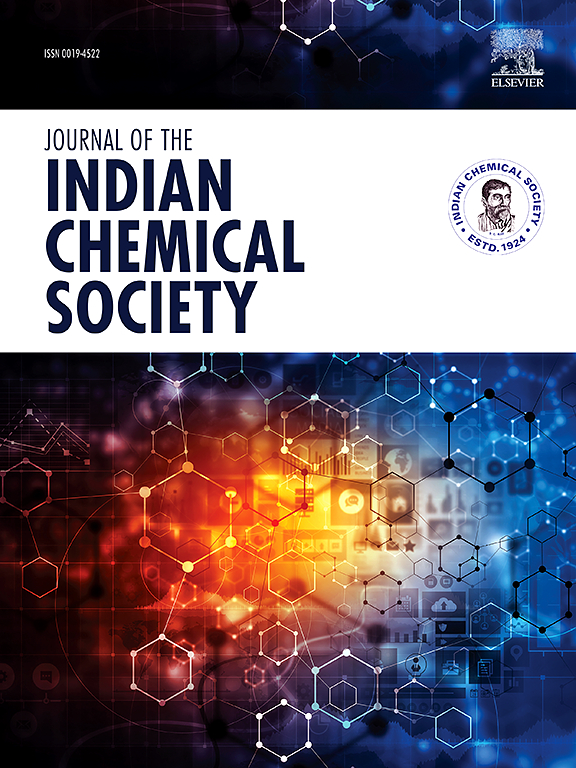利用分子模型、支架跳跃和基于机器学习的生物活性预测探索结核分枝杆菌谷氨酰胺合成酶的天然抑制剂
IF 3.2
4区 化学
Q2 CHEMISTRY, MULTIDISCIPLINARY
引用次数: 0
摘要
由结核分枝杆菌(Mtb)引起的结核病(TB)仍然是一个重大的全球健康负担,主要是由于耐药菌株的出现。谷氨酰胺合成酶是氮代谢和细胞壁生物合成的必需酶,因此是结核分枝杆菌感染治疗干预的关键靶点。本研究应用计算药物发现从植物源性天然有机化合物中鉴定潜在的谷氨酰胺合成酶抑制剂。总共筛选了1250个化合物,其中1125个化合物的结合能在-10.2到-2.5 kcal/mol之间。再对接和分子动力学模拟证实了它们的稳定结合,其中阿门托黄酮显示出最强大的相互作用谱。主成分分析(PCA)和电子衍射分析(FEL)表明,阿门托黄酮(Amentoflavone)和紫石籽酸(Lithospermic acid)的构象状态最为稳定。然后应用支架跳跃产生两种新的类似物,保留了铅支架的有利特征。为了定量评估生物活性,使用分子描述符来训练机器学习回归模型。在各种算法中,高斯过程和额外树回归器的精度最高(R2 ~ 1.0), RMSE最低。利用这些模型预测铅化合物和设计化合物的pIC50值,其中紫草酸得分最高(7.49),其次是丹参酮IIA(7.22),衍生品_1(7.18)和阿门托黄酮(6.92),所有这些化合物都优于对照化合物(6.79),表明具有较好的预测生物活性。这些发现支持了计算模型的预测能力,并突出了未来对耐药结核病进行实验验证的高优先级候选药物。本文章由计算机程序翻译,如有差异,请以英文原文为准。
Exploring natural inhibitors of Mycobacterium tuberculosis glutamine synthetase using molecular modeling, scaffold hopping, and machine learning-based bioactivity prediction
Tuberculosis (TB), caused by Mycobacterium tuberculosis (Mtb), remains a significant global health burden, mainly due to the emergence of drug-resistant strains. Glutamine synthetase is an essential enzyme in nitrogen metabolism and cell wall biosynthesis, hence a key target for therapeutic intervention against Mtb infection. This study applied computational drug discovery to identify potential Glutamine synthetase inhibitors from plant-derived natural organic compounds. A total of 1,250 compounds had been virtually screened, yielding 1,125 with binding energies that ranged between -10.2 and to -2.5 kcal/mol. Re-docking and molecular dynamics simulations confirmed their stable binding, with Amentoflavone showing the most robust interaction profile. PCA and FEL analyses revealed that Amentoflavone and Lithospermic acid exhibited the most stable conformational state. Scaffold hopping was then applied to generate two novel analogs retaining favorable features of the lead scaffold. To quantitatively assess bioactivity, molecular descriptors were used to train machine learning regression models. Gaussian Process and Extra Trees Regressors achieved the highest accuracy (R2 ∼1.0) and lowest RMSE among various algorithms. These models were then used to predict pIC50 values for the lead and designed compounds, with Lithospermic acid scoring the highest (7.49), followed by Tanshinone IIA (7.22), Derivative_1 (7.18), and Amentoflavone (6.92), all of which outperformed the control compound (6.79), indicating superior predicted bioactivity. These findings support the predictive capacity of the computational model and highlight high-priority candidates for future experimental validation against drug-resistant TB.
求助全文
通过发布文献求助,成功后即可免费获取论文全文。
去求助
来源期刊
CiteScore
3.50
自引率
7.70%
发文量
492
审稿时长
3-8 weeks
期刊介绍:
The Journal of the Indian Chemical Society publishes original, fundamental, theorical, experimental research work of highest quality in all areas of chemistry, biochemistry, medicinal chemistry, electrochemistry, agrochemistry, chemical engineering and technology, food chemistry, environmental chemistry, etc.

 求助内容:
求助内容: 应助结果提醒方式:
应助结果提醒方式:


